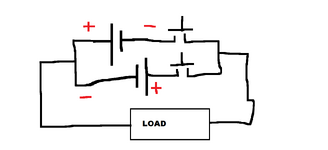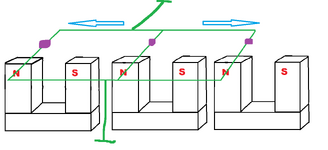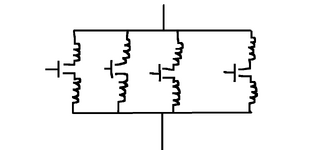Salvador12
Full Member level 4
I have two coils where the start of each coil is connected together while the ending connected to a transistor that connects it then further to the circuit, I need to switch between the coils but in such a way that only one coil is ON at any time.
The problem is that each coil has opposite EMF and current direction, this means that as long as my voltage is very low (below the MOSFET body diode threshold voltage) I can get away with using just single FET for each switch, but if my voltage gets to above 1 volt and higher then the polarity of the coil that matches the MOSFET body diode will mean that FET will be always ON.
What can I use here ? One example I know is back to back series MOSFET's as a bidirectional switch but that complicates my design as it needs 2x more FET's and 2x more gates to control and most likely an IC for each back to back 2 FET switch.
Is there any other possibility with using just one switch/transistor for each coil?
The problem is that each coil has opposite EMF and current direction, this means that as long as my voltage is very low (below the MOSFET body diode threshold voltage) I can get away with using just single FET for each switch, but if my voltage gets to above 1 volt and higher then the polarity of the coil that matches the MOSFET body diode will mean that FET will be always ON.
What can I use here ? One example I know is back to back series MOSFET's as a bidirectional switch but that complicates my design as it needs 2x more FET's and 2x more gates to control and most likely an IC for each back to back 2 FET switch.
Is there any other possibility with using just one switch/transistor for each coil?


